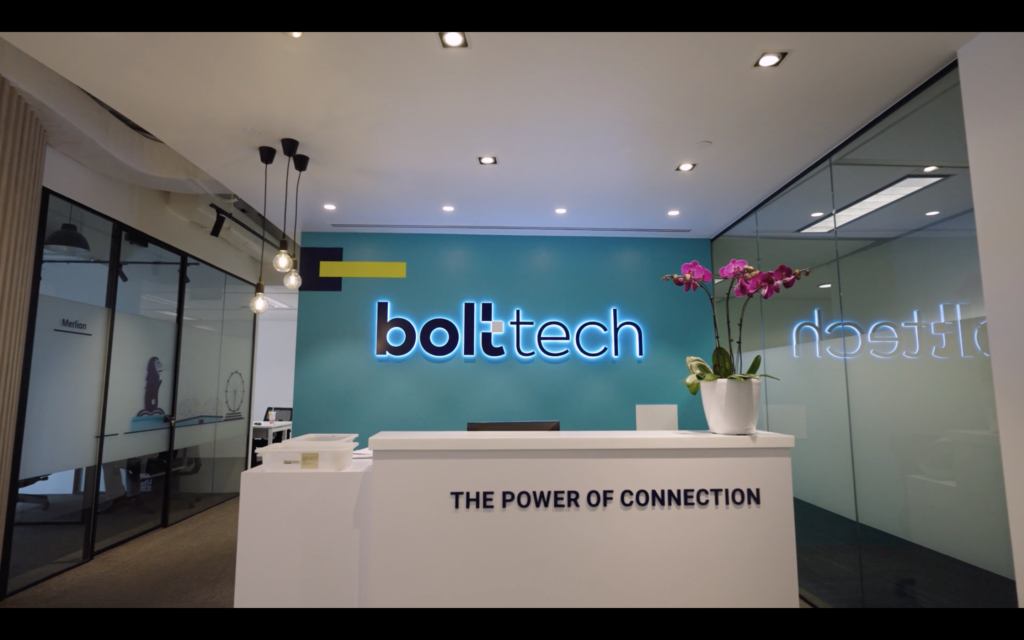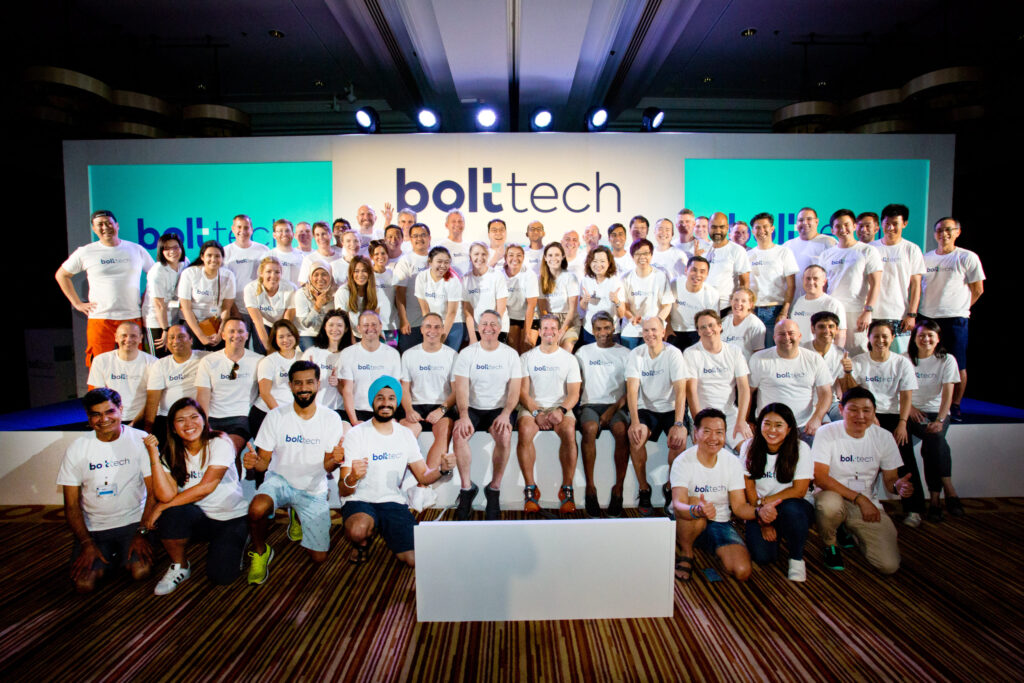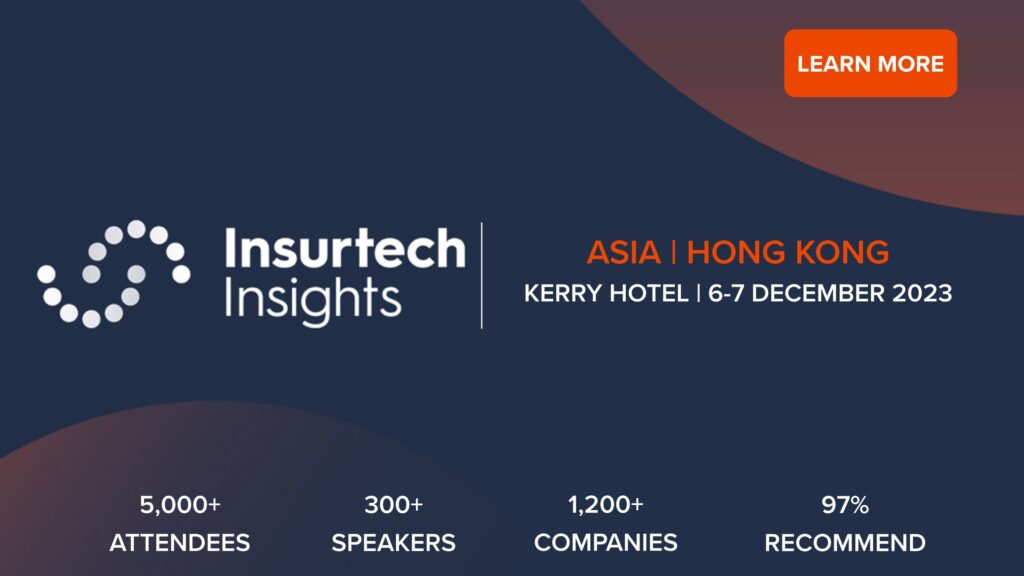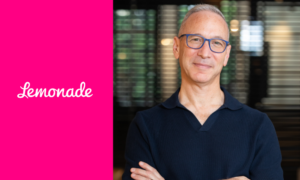After raising almost half a billion dollars from investors across two funding rounds, bolttech has secured its reputation as a market leader. Insurtech Insights caught up with Stephan Tan, Group Chief Strategy Officer – the man leading the company’s impressive investment journey.
Stephan Tan comes from an investment banking background, where he specialised in M&A and corporate finance. He started his career with Citi Group in Frankfurt and London until he relocated to Hong Kong, where he spent eight years before joining the PCG ecosystem in insurance.
In 2018, he met with Rob Schimek (bolttech’s Group CEO) starting a mission to establish a new digital platform for non-life insurance. In 2018 and 2019, the founding team initiated the incubation process where Tan played a key role in setting up and scaling the company.
Navigating through seed funding, Tan and his team progressed to Series A (US$247.2 million raised) and Series B (US$246 million raised). Currently, he oversees corporate development strategy, M&A, investor relations, shareholder management, and global strategic partnerships, such as the recent Allianz partnership and the acquisition of Digital Care. Additionally, Tan heads the underwriting business within bolttech’s global insurance solutions. Notably, the Series A and Series B were both managed in-house without external advisors.
What are the deciding factors that dictate initially a company to seek funding? And can you tell us about bolttech’s journey specifically?
When it comes to seeking funds, the primary motive for any company is usually to meet its capital requirements and sustain its operations. The main focus is about ensuring there’s enough fuel to pay the bills and extend the cash runway. In our transition from seed funding to Series A, the key question was how to prolong our cash runway.
However, beyond just securing capital, there’s a crucial aspect – testing the business model. Investors serve as the most challenging critics, helping to validate not only the acceptance of the business model but also the company’s valuation.
As we progressed to Series B, the dynamics shifted. With a more secure cash runway, it wasn’t solely about capital anymore; it became increasingly about finding strategic partners.

Our goal is to build a robust company and foster an ecosystem, positioning ourselves as enablers rather than disruptors. Building such an ecosystem involves strong partnerships. Ideally, we seek investors who not only contribute financially but also bring a strategic angle. Partners like Tokio Marine, MetLife and Khazanah, who not only provide access to their networks, but actively seek our advice on digital transformation, creating a mutually beneficial relationship.
Lastly, even with a sufficient cash runway, there’s a continuous need for capital to fund our internal initiatives. Take the example of investments in data and AI; the potential is immense, especially in untested territories in the insurance space. Raising additional funds, especially from strategic investors, provides the flexibility to explore and invest in opportunities that can have a significant impact operationally. This additional funding also supports our expansion into new markets.
We are currently operating in more than 35 markets across four continents, each new market requires capital. We don’t expand just for the sake of having a presence; rather, we grow in collaboration with our partners, such as Samsung who we partner with for mobile device protection, responding to their interest in exploring new markets and strategically investing capital to fuel this growth.
Delving into the current market dynamics, can you shed light on its current state? Is it evolving, getting better, or perhaps becoming more challenging? Considering the notable shifts from the recent bubble to a situation resembling 2018-2019, do you foresee a move towards progress?
The market is undergoing significant shifts. From a high-growth profitability perspective, there’s an interesting dynamic. Capital is still abundant and available, but the scrutiny and careful approach of investors in selecting companies to invest in persists. It’s not a shortage of capital; it’s more about where it’s directed. The pendulum has swung from an intense focus on top-line growth to a sudden demand for profitability over the past two years. This abrupt shift has posed challenges for many companies.
Now, there’s a slight correction. Investors are acknowledging that immediate profitability isn’t a universal demand, but they want to see companies demonstrating a clear path to profitability. Moreover, there’s a realisation that top-line growth remains crucial. The market is adopting new financial metrics, such as the rule of 40 or rule of 200, blending top-line growth with profitability. This signifies a shift towards a more nuanced evaluation, where a combination of factors determines attractiveness.
So, a recalibration is happening, emphasising a balanced approach between top-line growth and profitability?
Exactly, it’s an evolving landscape where investors are recognising the importance of both growth and financial stability. Companies now have more leeway, provided they can demonstrate a strategic path forward in terms of profitability while not compromising on top-line growth. It’s a delicate balance that the market is starting to appreciate.
How should companies prepare themselves to approach an investor at this time? What are the critical points?
In general, predicting shifts in investor sentiment is always a formidable task. A few years back, the spotlight was solely on top-line growth, but now the focus has shifted to profitability. It’s crucial for a company to be flexible and not too stubborn in its approach when seeking capital. The era of being like the Amazons of the past, having some room to delay profitability while concentrating on top-line growth, seems to be waning.
Transitioning from insurtech 1.0 to 2.0, testing various business models, such as D2C, B2B2C, or the full-stack carrier model, presents its own challenges. Pivoting becomes difficult once a company has committed to a particular direction, and predicting market shifts is no easy feat. bolttech may have been fortunate to have made the right bet on a business model that is now widely accepted, but this is not the norm. Companies should be prepared to adapt, acknowledge when something isn’t working, and pivot if needed, without altering the core too much.
Addressing the challenges faced by investors requires recognising that everything takes more time now. Initiating investor outreach early in the process and understanding current market needs is crucial. Lessons learned over the last 12 months emphasise the importance of having an extended runway. Investors are more cautious, and the process may take longer than anticipated. Looking ahead and being well-prepared are key factors. Preparation, especially in providing sophisticated data to prove the viability of the business, becomes paramount in an environment where investor scrutiny is higher, and scepticism prevails.
How long, on average, does the investment round process take? What’s a reasonable amount of time from initiating a new round to closing it?
In the case of bolttech, we went for a 100% straight equity raise at an up-round valuation without any downside protection. While this structure may take more time to find investors, it validates the strength of our business model and the belief that our investors have put in us.
Other companies with the urgent need of fresh capital, may have been willing to compromise by accepting a discount to their current valuation, a mix of debt and equity or accepting downside protection features.
For companies looking to raise funds, my advice would be to anticipate a timeframe of at least six to nine months. While some might expedite the process by compromising on certain aspects, ensuring alignment with your criteria might take a bit longer, but it’s worth it in the end.
Could you elaborate on the significance of long-term investors and Insurtech partnerships? Is this the ultimate goal for most companies, or do many still opt for a short-term strategy? And when it comes to investors, what form of partnership proves to be the most effective?
It really comes down to what your company is looking for. In the past, around 2020, many companies would raise funds by essentially casting a wide net, reaching out to their network and seeing what sticks, like throwing spaghetti at the wall. While this might still work for some seeking short-term gains, the landscape has evolved. If all you need is capital and you’re flexible with certain downside protection features, this approach might suit you. However, for bolttech, we’re in it for the long haul, aiming for stability in our shareholder structure and lasting business collaborations. Ideally, we seek long-term shareholders with a strategic angle to enhance our ecosystem.
For startups in the early stages, is it more beneficial to prioritise capital to establish themselves, or would diving into long-term partnerships from the get-go be the better approach?
The strategy depends on the growth stage. Early on, gaining traction is crucial. For smaller startups, securing those large strategic tickets might be challenging. However, a combination is possible. There are numerous VCs, including corporate VCs with strategic angles that can move relatively fast. While VCs act swiftly, they often come with higher volatility and prioritise financial returns. So, if speed is the essence, the venture capital route might be the go-to.
Let’s dive into the essentials. If you were advising newcomers in the market, what are two or three critical factors they should never embark on an investment round without?
The number one factor, without a doubt, is chemistry. When you’re out pitching your business proposition to numerous investors, establishing a genuine connection is paramount. Sharing the passion to transform the future of insurance is key. Enjoying the conversation, exchanging ideas, and receiving input make the partnership feel natural. On the flip side, dealing with someone unfamiliar with your industry takes more time and effort to align. Chemistry is the foundation.
The second critical factor, from our perspective, is a long-term commitment. In our current phase of thinking and strategic alignment, it’s crucial that investors understand and commit to our vision, business model, and strategy. It goes beyond the initial promises; it’s about weathering ups and downs together. A long-term partnership, akin to a marriage, where mutual support prevails, even when things don’t go as planned.
Now, delving deeper, the third factor is expertise. As a young startup, you might not have an extensive network or all the answers. Having shareholders with vast networks, industry knowledge, and the ability to open doors becomes invaluable. They can guide you through the trial-and-error phase and leverage their connections to propel your venture forward. It’s not just about capital; it’s about tapping into their wealth of experience.

So, it’s equally crucial to be discerning about where that capital comes from. Can you elaborate on the significance of choosing the right investors and the impact they can have on a company’s journey?
From a bolttech perspective, we’ve been fortunate to have incredibly supportive shareholders. Leapfrog, a leading impact investor globally, joined us as one of our latest investors. Their strength in ESG and financial inclusion is invaluable. They don’t just bring capital; they bring expertise and connections in the insurance industry. Having partners like EDBI and Khazanah, the government funds from Singapore and Malaysia, adds another layer of support. Their commitment extends beyond investment, they open doors, connect us to a broader community, and become instrumental in propelling our mission forward.
Choosing partners who align with your vision and can contribute more than just capital is key. It’s about driving collective success.
Join bolttech’s Leaders in Hong Kong at Insurtech Insights Asia, 2023
Leaders from bolttech, one of the most successful insurtechs in Asia, will be speaking at the Insurtech Insights Asia 2023 conference, at the Kerry Hotel on December 6th and 7th.
Scott Austin, boltech’s Group Chief People Officer, will be a panelist in the session entitled: “Attracting and Keeping Top Talent: Forward Thinking Dialogue between Insurer and Insurtech”.
Stephan Tan, bolttech’s Group Chief Strategy and Investment Officer, will also be taking to the stage, in the session: “Tokio Marine X bolttech.”
For more information on speaker opportunities, events, sponsorships and tickets for the upcoming Insurtech Insights Asia 2023 conference, visit here
Interview by Joanna England

Joanna England is an award-winning journalist and the Editor-in-Chief for Insurtech Insights. She has worked for 25 years in both the consumer and business space, and also spent 15 years in the Middle East, on national newspapers as well as leading events and lifestyle publications. Prior to Insurtech Insights, Joanna was the Editor-in-Chief for Fintech Magazine and Insurtech Digital. She was also listed by MPVR as one of the Top 30 journalist in Fintech and Insurtech in 2023.









